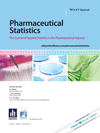A comparison of bootstrap approaches for estimating uncertainty of parameters in linear mixed-effects models†
Abstract
A version of the nonparametric bootstrap, which resamples the entire subjects from original data, called the case bootstrap, has been increasingly used for estimating uncertainty of parameters in mixed-effects models. It is usually applied to obtain more robust estimates of the parameters and more realistic confidence intervals (CIs). Alternative bootstrap methods, such as residual bootstrap and parametric bootstrap that resample both random effects and residuals, have been proposed to better take into account the hierarchical structure of multi-level and longitudinal data. However, few studies have been performed to compare these different approaches. In this study, we used simulation to evaluate bootstrap methods proposed for linear mixed-effect models. We also compared the results obtained by maximum likelihood (ML) and restricted maximum likelihood (REML). Our simulation studies evidenced the good performance of the case bootstrap as well as the bootstraps of both random effects and residuals. On the other hand, the bootstrap methods that resample only the residuals and the bootstraps combining case and residuals performed poorly. REML and ML provided similar bootstrap estimates of uncertainty, but there was slightly more bias and poorer coverage rate for variance parameters with ML in the sparse design. We applied the proposed methods to a real dataset from a study investigating the natural evolution of Parkinson's disease and were able to confirm that the methods provide plausible estimates of uncertainty. Given that most real-life datasets tend to exhibit heterogeneity in sampling schedules, the residual bootstraps would be expected to perform better than the case bootstrap. Copyright © 2013 John Wiley & Sons, Ltd.




